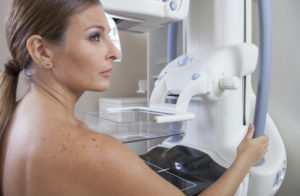Barium: Great for Imaging, and Okay for Puns
 Imaging of the gastrointestinal system can be done many ways, using scopes, fluoroscopy/x-rays, ultrasound, CT and MRI studies. The gastrointestinal (GI) system includes everything from the mouth or oral cavity and esophagus down to the rectum and anus. The GI tract can be thought of as one long hollow tube, and filling the tube with fluid to image it with xrays was one of the earliest techniques developed when radiology was in its infancy.
Imaging of the gastrointestinal system can be done many ways, using scopes, fluoroscopy/x-rays, ultrasound, CT and MRI studies. The gastrointestinal (GI) system includes everything from the mouth or oral cavity and esophagus down to the rectum and anus. The GI tract can be thought of as one long hollow tube, and filling the tube with fluid to image it with xrays was one of the earliest techniques developed when radiology was in its infancy.
This technique is still used today with barium sulfate the most commonly used contrast agent. Barium blocks the xrays from travelling through the body resulting in a white appearance on the image. Since its first development, many different forms of barium are now available allowing us to see different parts of the GI tract in detail.
Barium studies include UGIs (upper gastrointestinal exam to evaluate the esophagus, stomach and the first part of the small bowel), esophagrams (to image the esophagus), small bowel series (to image the small intestine) and barium enemas (to evaluate the colon or large intestine). Barium or other oral contrast agents may be used for CT examinations of the abdomen and pelvis, allowing better visualization of the GI tract. Over the next few posts we’ll be covering these imaging tests in detail.
Barium has been used for years and is inert, traveling through your system without being absorbed. It is well tolerated in almost all patients. After a study using barium, patients are advised to drink extra fluids in order to flush the barium out of their system.
Oh, and we promised a groaner of a pun too. What do you do with a chemist who has passed on? Barium!
Image credit: Bariumsulfaat by Dr.T via Wikimedia Commons Copyright Creative CommonsAttribution-Share Alike 3.0 Unported
Originally published 7/9/14 on diagnosticimagingcenterskc.com.





